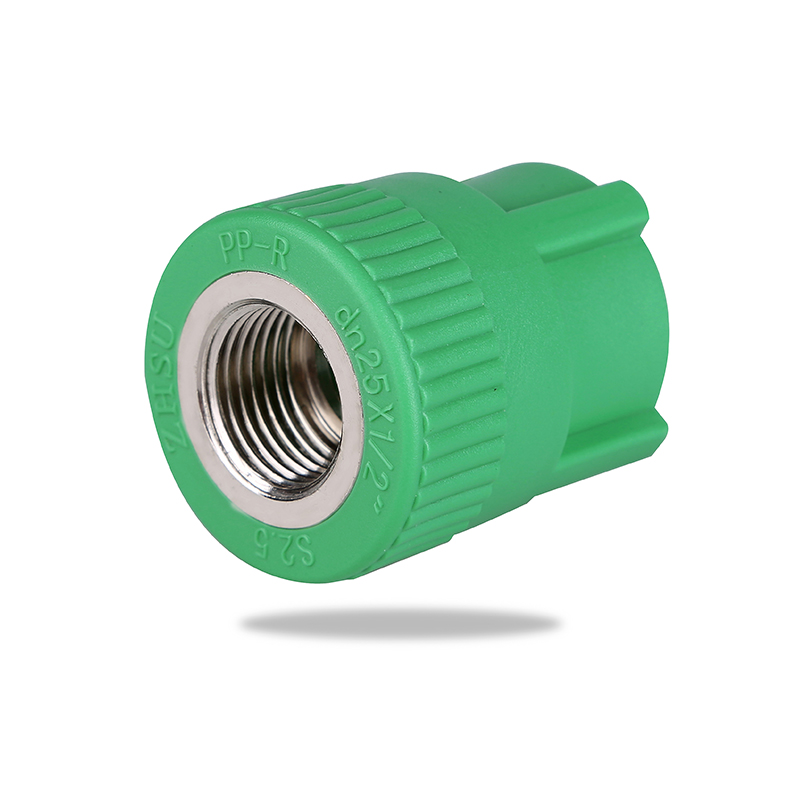In modern building water supply systems, PPR Coupling is widely used in hot water and cold water pipe systems in homes, hotels, hospitals, etc. due to its excellent temperature resistance, good chemical stability and convenient hot melt connection method. However, in actual operation, especially in high temperature and high pressure environments, such as floor heating systems, centralized hot water supply or industrial circulating water systems, whether PPR Coupling can maintain long-term sealing reliability is one of the key issues to ensure the safe operation of the entire pipeline system.
PPR material properties lay the foundation for sealing
PPR (Polypropylene Random Copolymer) is a polymer material made of random copolymerization of ethylene and propylene, with the following significant advantages:
Good high temperature resistance: It can work below 70°C for a long time and can withstand temperatures up to 95°C for a short time;
Strong creep resistance: It is not easy to deform under continuous pressure, ensuring that the connection parts are not loose;
High chemical stability: It has good resistance to chloride ions, acid and alkali substances in water;
Good hot melt adhesion: After heating with a special hot melt tool, the pipe and the pipe fittings can form an integrated connection to eliminate the risk of leakage.
These material properties provide a solid foundation for the sealing reliability of PPR pipe fittings under complex working conditions.
Structural design optimization improves connection strength
In addition to the material itself, the structural design of PPR pipe fittings also directly affects its sealing performance under high temperature and high pressure:

1. Hot-melt socket structure
PPR pipe fittings adopt standard socket-type hot-melt connection. Through the precise control of hot-melt depth and time, a seamless fusion layer is formed between the pipe and the fittings, effectively preventing leakage caused by loose interfaces.
2. Sealing surface precision control
High-quality PPR pipe fittings strictly control the inner diameter and outer diameter tolerances during the mold manufacturing stage to ensure that the connection surface fits tightly and avoid stress concentration or sealing failure caused by excessive gaps.
3. Multi-directional support structure design
For example, complex pipe fittings such as tees and elbows often use reinforcing ribs or thick wall designs to enhance structural stability under high-pressure fluid impact and reduce leakage risks caused by deformation.
Installation process affects the sealing effect
Even with high-quality materials and reasonable structure, the sealing reliability of PPR pipe fittings still depends on standardized construction technology:
Hot-melt temperature and time control: The generally recommended hot-melt temperature is 260±10℃, and different diameters correspond to different hot-melt times (such as DN20 pipe fittings need hot-melt for 4 seconds). Overheating or underheating will affect the fusion quality;
Cleaning the operating surface: Dust and oil on the surface of pipes and fittings must be removed before installation, otherwise it may cause local poor bonding;
Cooling and shaping process management: After hot-melting, it should be inserted quickly and kept still and cooled. It cannot be rotated or stressed to avoid damaging the fusion interface;
Pressure test link: After the system is installed, a water pressure test should be carried out (usually 1.5 times the working pressure, lasting more than 30 minutes) to ensure that the overall sealing meets the standard.
The reason why PPR Coupling can achieve reliable sealing performance in high temperature and high pressure environments is due to its excellent material properties, scientific structural design, standardized installation process and reasonable maintenance strategy. Whether in residential hot water systems, commercial buildings or industrial pipelines, PPR pipe fittings can provide long-term and stable sealing protection as long as the materials are qualified and the construction is proper.
With the continuous improvement of building energy conservation and comfort requirements, PPR Coupling will continue to be the mainstream choice in the field of hot water transportation in the future. At the same time, combined with innovative means such as new oxygen barrier technology and intelligent monitoring system, its sealing reliability and system safety will be further enhanced.

 简体中文
简体中文 English
English русский
русский Español
Español Français
Français عربى
عربى Português
Português












